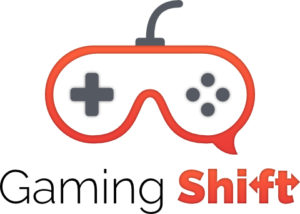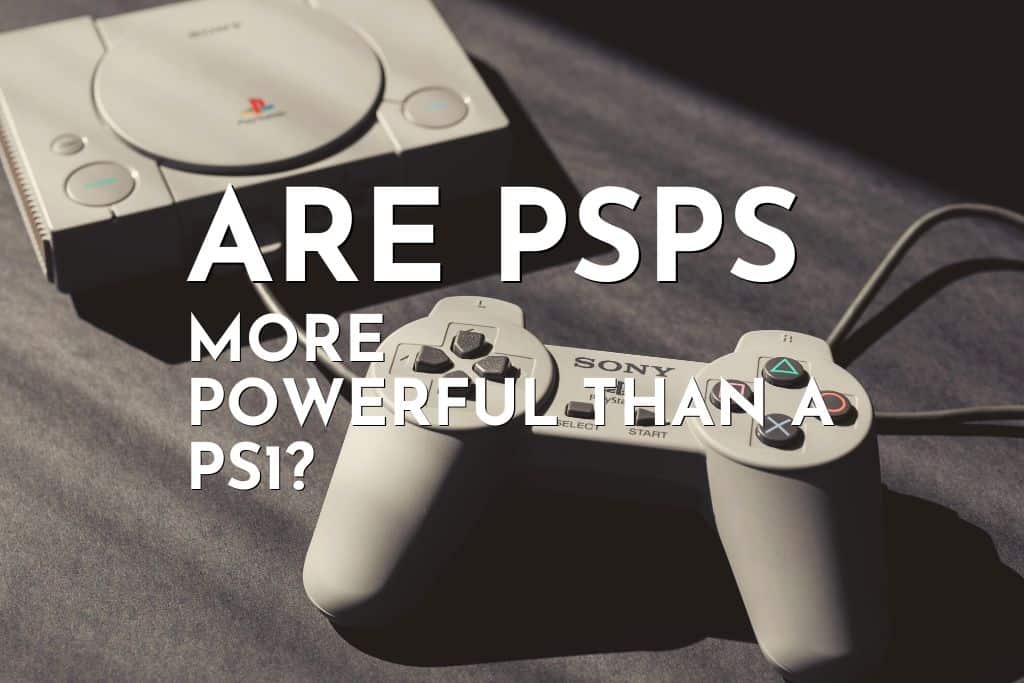With the PSP, Sony tried to push the boundaries of technology just like they did with the original PlayStation in 1994. Only this time, they went portable and had the advantage of hindsight while developing games for the PS1. Officially, Sony maintained that the PSP and PS2 were comparable in terms of performance- but in reality, it’s more complicated.
Setting aside the PS2 comparison for a minute, are PSPs more powerful than a PS1? On paper, the PSP blasts the PS1 out of the water with its much faster CPU and GPU. The PSP also has a lot more memory than the PS1, allowing it to display more detailed textures and larger game worlds.
So yes, the PSP is unquestionably more powerful than a PS1. This tells you something about the rate of progress we could expect from computer hardware back in the early 2000s. In 2004, PSP owners were packing more muscle than a PS1 and could fit it inside the pocket of their pants.
Are PSPs More Powerful Than A PS1?
The PSP is significantly faster than the PS1, and its games look better. This is a result of two things- advancements in technology, and a better understanding of 3D game development. When you look at old PS1 games, they really haven’t aged well.
The textures are blurry, and the character models look like they were constructed out of cardboard. However, N64 is from the same generation as PS1 and its games still look good today. That’s because Nintendo is really good at art design and themes.
Early 3D games don’t look bad just because of low poly counts, but because of janky animations and dated art design. Console developers in the mid-1990s were still figuring out how to do 3D games, using brand-new hardware and revolutionary development techniques.
Sure, PS1 games look good if you were a gamer of that time. But they aged very fast. I would say PS2 is when we started figuring out how to do 3D right and took advantage of all that awesome hardware.
This much is evident if you look at PS2 games, they haven’t aged as badly as PS1 games. The same goes for PSP, its games look nearly as good as PS2 games. Or even better, thanks to the tiny screen that boosts pixel density and hides all the little jaggy edges you see on a TV.
How Powerful Is The PSP?
Let’s start with the CPU. The PSP uses a MIPS-III R4000 64-bit processor that can clock up to 333MHz. For comparison, the PS1 is equipped with a MIPS-I R3000 32-bit processor running at 33.8 MHz.
Both CPUs use the MIPS instruction set, but the PSP processor is more advanced and runs at much higher speeds. It also has access to more memory- 2MB of system RAM on the PS1 vs 32MB on the PSP. Video memory is also higher on the PSP, 2MB vs 1MB for the PS1.
And it’s not just the processor that’s faster. The PSP’s GPU is several leagues ahead of the PS1 Geometry Transformation Engine. While the PS1 GTE has just 1 ROP and 3 TMUs, the PSP GPU has 5 ROPs and 5 TMUs.
This results in a much higher throughput for all tasks. Pixel, vertex, and texture rates are anywhere from 2 to 10 times higher in the PSP when compared to the PS1. Its GPU also gets a 512-bit bus (PS1 GPU has a 32-bit bus) for higher bandwidth.
Games on PSP look much better than on PS1. And it manages all this while displaying content at a higher resolution (which requires more processing power). That’s what you get by moving from a 600nm node to a 90nm node.
Does PS2 Have Better Graphics Than PSP?
Generally speaking, the PS2 edges out the PSP slightly in terms of graphical performance. Its games look similar, but that’s because the PS2 has to push a higher resolution compared to the PSP. Some PSP games look better than some PS2 games, and vice versa.
But for the most part, you won’t be playing the same games on both PS2 and PSP. One is a full-size console; the other is a handheld. The only way to directly compare graphical performance is by looking at games that are on both consoles.
Tekken 5: Dark Resurrection is one of those games that’s on both PSP and PS2. Disgaea, Ghostbusters, and Viewtiful Joe: Red Hot Rumble are more examples of games that are available for both systems.
Is PS1 More Powerful Than N64?
The PS1 is considered slightly weaker than the N64, based on the hardware specifications. While the PS1 uses a 32-bit MIPS R3051 running at 33.8MHz, the N64 is powered by a 64-bit MIPS R4300i running at 93.75MHz. The N64’s processor also has nearly 5 times the L1 cache (24KB vs 5KB) compared to the PS1 processor.
The N64’s GPU is also significantly faster than the PS1 GPU. Without the Expansion Pak, N64 has 4.5MB of unified memory of which 0.5MB is used exclusively by the Reality Coprocessor (GPU). With the Expansion Pak, system RAM is boosted to 8MB.
In comparison, the PS1 has just 2MB of system RAM and 1MB of video RAM. However, there is one area where the PS1 leads. And that is storage media.
While a CD can store 650MB of data, an N64 cartridge tops out at just 64MB. This caused quite a few complications for game developers. Sure, cartridges provide faster loading times compared to discs.
But you cannot store the same amount of data on them. As a result, N64 ports of PS2 games had to compromise on things like full-motion cinematics and texture quality. The N64 made up for these with better lighting, anti-aliasing, and perspective-correct texture mapping.
Why Did PSP Go Fail?
Released in 2009, the PSP Go was a sleeker version of the regular PSP with a sliding display and 16GB of internal memory. Since this newer version had no UMD drive, it couldn’t play physical copies of PSP games. Instead, you had to download all your games from the PlayStation Store.
Back then, Wi-Fi wasn’t nearly as fast or ubiquitous as it is today. Sure, games were also smaller but downloading them online was far from a satisfactory experience. Plus, you would be losing battery life while your PSP Go is sitting there, downloading stuff.
The internal storage was neat, but you still needed an M2 memory card if you were going to play more than a couple of games. PSP Go also has a smaller display, 3.8” vs 4.3” on the regular PSP. In the end, this console failed to gain any traction.
Because gamers saw no point in paying $250 for one of these when they could just get a regular PSP for less money. And PSP Go lacked physical media support which made the sharing of games with friends a real problem. Buying used copies of games was also an issue with this all-digital console.
How Long Is PSP Battery Life?
The PSP was equipped with a 1800mAh battery. Later revisions (2000 and 3000 series) got smaller 1200mAh batteries as they were physically slimmer and used more efficient displays + processors. Irrespective of which PSP model you’re looking at, expect between 3 to 6 hours of gameplay on battery.
2D games are lighter on the hardware and will run longer. While 3D games that push the PSP GPU to its limit will eat up your battery in 3 hours or less. Charging a PSP from zero to full takes 150 to 180 minutes.
Conclusion
I hope this article helped you understand the difference in power between a PS1 and PSP. Even though the PSP is a handheld, it was designed and released nearly 10 years after the PS1. The CPU is faster, the GPU is faster, and it has more RAM.
Games on PSP look nearly as good as PS2 games, so you can imagine how it compares to a PS1. Many people are buying PSPs on the used market these days, just to emulate PS1 and SNES games. It’s a nice portable emulation machine, and you can get one for very cheap these days.

